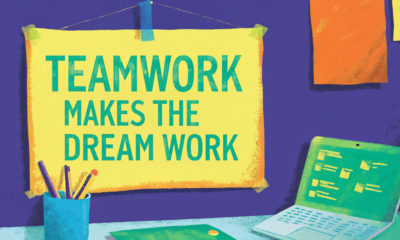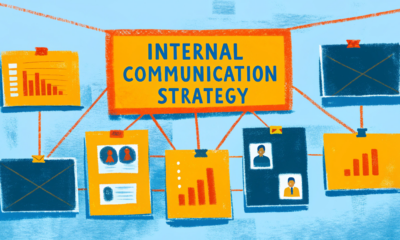Organizational Culture
When Your Culture Conflicts With Your Policies

Your policies look like a shining dream. Your actual culture feels like a branch of corporate hell — messy, misaligned, and stressful. That gap between what’s written and what actually happens drives employees to frustration, exposes compliance risks, and erodes the trust that holds your organization together.
And it’s not just perception. Only 18% of employees feel that their organization’s stated values or external image align with the culture they experience every day. A quarter believe their leaders’ behavior does not reflect the values portrayed externally. These numbers show that the conflict between policy and culture is real, widespread, and costly.
Recognizing these gaps is one thing. Knowing how to act on them is another. This guide tackles both. You’ll learn how to:
- Spot culture-policy gaps before they become crises
- Bridge misalignment with practical, actionable steps
- Build policies that reflect the way work actually gets done
By the end, you’ll have a roadmap for turning friction into trust, compliance, and engagement—even when reality clashes with the ideal on paper.
What do we mean by “Policy” and “Culture”?
Policies and culture shape each other, but they are not the same. Policies reflect intention. Culture reflects reality. Understanding both is the first step to closing the gap.
Q: What is an organizational (or corporate) policy?
A set of formal rules, guidelines, or procedures created by leadership to regulate behavior, ensure compliance, and align decisions with legal and business requirements. Policies are usually documented, communicated, and enforced.
Q: What is organizational culture?
The shared values, beliefs, attitudes, and everyday behaviors that define “how we do things here.” Culture is lived and experienced — shaped by people’s interactions, traditions, and informal habits rather than just formal rules.
The easiest way to remember it:
- Policy is what’s written down.
- Culture is what actually happens.
- If they match → trust and clarity.
- If they clash → confusion, frustration, and high turnover.
Policy vs. Culture — key differences at a glance
| What We’re Talking About | Policy — The Official Story | Culture — The Real Story |
|---|---|---|
| Nature | The polished PDF in your onboarding folder. The thing HR can point to and say, “See? It’s in writing.” | The vibe you get on your first day. How people actually behave, not what’s on paper. |
| Who creates it | HR, Legal, and leadership sit down to make sure it’s fair, clear, and legally safe. | Everyone, every day — through habits, unspoken rules, and what’s rewarded or ignored. |
| Where you see it | On the company website, in the employee handbook, pinned in the HR office. | In Slack messages, hallway chats, who gets praised, and how managers react when things go wrong. |
| Why it exists | To set boundaries, keep the company compliant, and make expectations clear. | To give people a sense of “this is how we do things around here” — whether it’s friendly or cutthroat. |
| Work hours | “We work 40 hours. Overtime is rare and paid when approved.” | The unspoken rule: If you’re the first to leave, people notice. Late-night emails earn gold stars. |
| Diversity | “We welcome and respect everyone equally.” | All leadership looks the same. Jokes at someone’s expense slide by without comment. |
| Communication | “Our open-door policy means you can speak up freely.” | You can speak up… once. After that, projects mysteriously get reassigned. |
| Flexibility | “Two remote days per week, just check with your manager.” | Technically allowed — but your boss sighs every time you ask. |
| Social events | “Team-building activities are optional.” | Skip the happy hour, and next week you’re “out of the loop” on decisions. |
Quick reality check for HR and leadership:
Employees judge your company by its culture, not its policies. If your policy shines but the culture tells another story, the culture will win — every time. The real danger? A gap big enough that your beautiful policy reads like satire to the people living it every day.
Understanding these differences is one thing. The next challenge is spotting gaps before they become crises, and that’s what the following section covers.
Recognizing the signs — Culture vs. Policy misalignment
How do you know your culture and policies don’t align? Watch for these warning signs:
- Rules being skirted or workarounds: Employees covertly circumvent the rules. The policy manual may not allow sending sensitive information through personal email, but some still send files via Gmail because the official secure alternative is clunky or slow.
- Inconsistent leadership behavior: Managers act differently. One protects work-life balance, getting people out the door on time and avoiding burnout. Another requires near 24/7 availability. When these teams overlap, tension spills over, and employees start to whisper about equity—or a lack thereof. Suddenly, the “rules” become personal, not universal.
- Policy enforcement gaps: Policies exist, but no one enforces them. Mandatory data procedures skirted, or expense rules stretched to the limit for favorites.
- Diversity and inclusion vs. leadership practice: Policies may be stated to be supportive of equality, but leadership remains in the hands of the same types of people, and microaggressions are sanctioned. Staff see the gap between what’s said and what happens.
- Erosion of trust: People feel rules are being imposed, not co-created. A work-from-home policy is technically permissive of flexibility, but when the leaders of work audibly sigh each time someone works from home, employees quickly learn what’s really okay.
Quick сhecklist for HR Leadership
- Are unwritten behaviors breaking written policies?
- Do employees understand why policies are required, aside from the handbook?
- Is leadership consistent, or do loopholes go unnoticed?
- Are workarounds becoming the norm instead of being corrected?
Spot these warning signs early, and you can step in before misalignment becomes disengagement, turnover, or a full-blown culture headache.
Bridging the gap — down-to-earth steps to align policy and culture
Closing the gap isn’t stricter enforcement — it’s practical action, understanding, communication.
1. Observe and iterate
Walk the floor. Sit in on calls. Notice where the way people actually work clashes with what’s written down — work hours, communication habits, decision-making styles.
Culture isn’t static, and neither should your policies be. Keep watching, keep listening, and keep adjusting before friction becomes fracture.
2. Engage leadership
Get managers on the same page about both the intent and the lived reality of policies.
Show them clear examples of inconsistencies.
Leaders should be the first to live the behaviors you expect others to follow.
3. Involve employees
Run surveys, focus groups, or informal chats.
When people help shape the rules, they don’t just follow them — they own them.
4. Update policies where needed
Cut outdated or unrealistic rules. Policies should work with your culture, not against it.
When you make changes, explain the why. Transparency builds trust faster than any handbook.
5. Reinforce Through Communication
Spot and celebrate teams who live both the letter and the spirit of the rules.
Be consistent in messaging — if expectations change, everyone should hear it the same way.
Reality check: Closing the gap isn’t easy. Policies and culture must evolve together. When done well, employees think your words and actions are in sync, and that trust fuels engagement, retention, and performance.
Reflection and next steps
Closing the gap between policy and culture is not about making rules more enforced — it’s about creating alignment that works in the real world. For HR leaders, legal teams, and founders, alignment is crucial. It’s the distinction between engaged employees who trust the company and a workforce that secretly resists, disengages, or leaves.
Consider this: policies are your promise. Culture is the delivery. When they match, trust flourishes, compliance strengthens, and engagement thrives. When they don’t, even good rules feel like bad jokes.
Core actions for reflective HR leadership:
- Be an observant caretaker: have close eyes on behaviors and take early warning signs.
- Enlist leaders: get managers to demonstrate the behaviors the organization wants.
Listen to employees: co-created policy is more likely to be honored. - Act intentionally: revise rules, clarify expectations, communicate.
- Build feedback loops: watch alignment frequently and adjust before friction sets in.
Trust is fragile. But when culture and policy reinforce each other, your values stop being words on a wall — they become the way work gets done.
Organizational Culture
How Managers Model or Break Company Culture

Company culture is a bit like playing Jenga. Each piece for a decision, an answer, a moment of silence, help offered — or withheld. And who takes that thin strip from the bottom first? Most of the time, a manager. Not on purpose. Not out of malice. But because they’re wedged between trying to live up to what comes from above and the feelings down below.
Managers aren’t present to merely perform. They’re the human, living, breathing carriers of culture. Every day, they pass it on to their teams — or they don’t.
It might be as simple as a manager not naming bad behavior. Or skipping a check-in when the week is wild. And little by little, what once felt true begins to sound like empty lines in a communal doc. And the team catches wind.
No matter how precisely the culture is defined at the top, it’s lived by the managers. They translate it, make room for it, sometimes quietly redefine it. That is, culture is increasingly strong — or it begins to fall apart — in their hands.
In this article, we’ll explore how managers shape (or shake) company culture. Why their role is so pivotal. How to recognize the early signs of cultural drift. And most importantly, how to strengthen the people holding the tower up — every single day.
The unseen power of managers over culture
Company culture doesn’t live in mission statements or slide decks. It lives in behavior — consistent, visible, human behavior.
And no one models that more consistently than managers.
It’s in how they start meetings.
In the way they give feedback — or don’t.
In whether they speak up when it’s hard — or stay quiet.
In how they make space for emotion, or silently shut it down.
Each decision — even the smallest — signals what really matters here. Not what’s written on the wall, but what’s lived out on a random Tuesday morning.
For most employees, culture isn’t a keynote from the CEO. It’s how their manager reacts when a deadline slips. When someone speaks up. Or when they don’t.
Managers aren’t just team leads. They’re interpreters. Translators. Sometimes enforcers, sometimes protectors. Sometimes, they’re the entire interface between the company’s values and a team’s lived reality.
Some do this work instinctively — they lead from the front and alongside, balancing direction with care. Others struggle under the weight, caught between expectations, emotion, and lack of clarity. Some burn out. Others shut down. But a few become the reason people stay, grow, and thrive.
Manager impact in action:
- They set the rhythms and rituals of the workday — shaping whether the team feels steady or chaotic.
- They model what “respect” or “feedback” actually looks like here — not in theory, but in meetings and messages.
- They either make room for humanity… or slowly erase it through pressure and performance-only focus.
- They teach culture through actions more than any document can.
And when they’re left unsupported or unclear on what they’re meant to carry — even the best cultural vision starts to fray.
Which leads us to what happens next.
Stuck in the middle — where culture gets interpreted, filtered, or lost
Managers operate in a unique tension point — trying to align the executive vision with the emotional reality of the team.
They’re expected to deliver, explain, motivate, mediate — all at once. Often without enough context, tools, or influence over the very changes they’re announcing.
And here’s where the gap starts forming.
Leadership rolls out a bold new direction. But frontline systems stay the same. Pressure mounts. Questions multiply. And it’s the manager who has to soften the blow — or absorb the fallout.
That’s when culture becomes a filter — not a beacon.
Some managers walk that line carefully, choosing honesty and empathy while building back trust. Others, unsure or overloaded, freeze or fumble — and that’s when meaning begins to slip.
What cultural breakdown can look like day to day:
- A manager passes along a new value, but delivers it robotically — so the team assumes it’s not serious.
- A policy gets announced, but no one enforces it — making inconsistency feel like the norm.
- Bad news is shared without care — and psychological safety takes the hit.
In these moments, it’s not the message itself that shapes culture. It’s how the manager carries it.
And the emotional toll is real. When a manager’s personal values clash with what they’re being asked to implement, they may feel like double agents — torn between loyalty and authenticity.
Culture doesn’t always collapse loudly.
Sometimes, it simply dissolves in the middle — where clarity fades, accountability blurs, and teams start performing “the culture” instead of actually living it.
The solution isn’t perfection. It’s:
- Clear definitions of what good culture looks like — in action, not just language.
- Support and training for managers — so they don’t have to guess their way through complexity.
- Consistency between leadership intent and everyday systems.
Because no one sustains culture alone — and definitely not from the middle of crossfire.
How managers shape (or break) company culture
Culture doesn’t live in keynote speeches or posters in the break room.
It lives in what managers say (and don’t say), how they give feedback, what they tolerate, and how they lead their teams day by day.
They’re not just team leads — they’re culture carriers.
And in that role, they can either reinforce what’s good… or quietly unravel it.
Managers who build culture
They give real, values-based feedback.
Not just performance notes or check-the-box reviews. Thoughtful managers connect feedback to the values that define the team.
“You handled that conflict exactly how we talk about transparency — not avoiding the issue, but being kind and clear.”
That kind of comment doesn’t just correct or praise — it teaches culture. It reinforces the kind of behavior the organization wants more of.
But here’s what great managers also understand: feedback isn’t one-size-fits-all.
One team member might feel fully seen after a quick “Great job.” Another might need a few specific lines about what stood out and why. Some interpret silence as trust — others read it as indifference.
And let’s be honest — few things are more demotivating than giving your all… and getting nothing back but a vague “👍” or a silent approval in corporate chat.
It starts to feel like your work is vanishing into a drawer no one opens — or worse, bouncing off a wall that doesn’t respond.
That’s why values-based feedback isn’t just about what’s said — it’s about how and to whom. The best managers learn their team’s personalities and needs like a second language. They notice who lights up with public praise, who prefers private recognition, and who might need extra encouragement just to keep going.
Good feedback keeps people aligned.
Great feedback keeps them energized.
They create space for trust — and for mistakes.
Strong managers admit when they get something wrong. They don’t treat every misstep like a fire drill. Instead, they normalize learning — by owning their own misjudgments and encouraging others to do the same.
They don’t punish imperfection. They build psychological safety, so others feel safe speaking up, asking for help, or simply saying: “I don’t know.”
And when a team member slips up, they don’t rush to place blame or send someone to the metaphorical guillotine.
Because sometimes, mistakes aren’t about poor work ethic — they’re about context. Overload. Burnout. A day that started badly and never recovered.
Skilled managers know how to look beyond the surface. They observe. They talk. They ask the quiet questions — not like interrogators, but like people who care. They approach performance concerns like investigators, not judges.
And when it becomes clear that someone is genuinely misaligned with the role — or simply disengaged to the point of harm — they do act. But by then, they’re acting with clarity, not impulse.
Trust doesn’t mean avoiding accountability.
It means understanding the why before you decide the what.
They meet with people one-on-one — and they listen.
Great managers regularly check in with each team member, ideally every few weeks. Not just to ask about tasks, but to understand what motivates them, what’s blocking them, and what they’re not saying out loud. These conversations surface issues early — long before they grow into conflict.
And here’s the deeper truth: teams aren’t made of interchangeable parts.
They’re made of wildly different people — with different priorities, rhythms, backgrounds, and communication styles. Sometimes it feels like a puzzle built from multiple mismatched sets. One teammate is 22, building a career from scratch; another is 38, managing deadlines between daycare pickups. They won’t always see work — or life — the same way.
It’s the manager’s role to find what unites them. To notice the thread that runs through different people — and then build team rituals, expectations, and rhythms around that shared space.
That’s not just emotional intelligence. That’s strategic culture work.
According to Gallup, employees whose managers hold regular 1:1s are almost three times more likely to be engaged at work. Not because of the calendar invite — but because of the trust built in those moments.
They observe before they act.
When a manager steps into a new team, the instinct might be to dive in and start “fixing” things. But strong managers resist that urge. Instead, they shift into full observer mode — not unlike a calm narrator from a NatGeoWild documentary.
“Here, we see the senior developer in her natural habitat, balancing sprint goals and unexpected QA bugs with quiet determination…”
They watch how the team works, who takes initiative, where tension hides, and what rituals hold things together. They track project patterns, communication styles, emotional rhythms. They don’t interfere — not at first.
Only after observing the ecosystem in full — the dynamics, the unspoken norms, the historical context — do they begin to influence. They don’t wipe out what works. They tune it. And they gently remove what gets in the way.
They delegate well and trust the process.
Micromanagement kills team morale. Strong managers understand they can’t — and shouldn’t — do everything themselves. Even if they used to perform some of those tasks, they trust their team to own the work.
And yes — that trust isn’t always easy. Especially when the inner control freak kicks in:
“What if they mess it up?”
“This will take me five minutes — why risk it?”
But smart managers know the truth: real growth doesn’t happen under constant supervision. It happens through doing — and yes, through the occasional stumble.
They let go — not because they don’t care, but because they do.
They give their team space to rise, to learn, to become better. And in doing so, they remove the mental load of trying to be everywhere at once — freeing themselves to focus on the work only they can do: guiding, prioritizing, aligning.
Letting go isn’t neglect. It’s leadership.
They keep learning.
Great managers know leadership isn’t a finish line — it’s a practice. They don’t pretend to have all the answers. They attend manager trainings. They read, reflect, and evolve. They study people as much as they study processes — because people management is never static.
And perhaps most importantly, they embrace the mindset behind that old Socratic truth:
“I know that I know nothing.”
Even when it feels like they’ve seen it all, one shift in perspective can unlock entirely new insights. A moment of humility often opens the door to real clarity.
That doesn’t mean chasing every course, certification, or masterclass that crosses their feed. Learning isn’t a scavenger hunt — it’s a strategy.
They assess what’s relevant now, and what will matter long-term.
They vet the source — the experience behind the speaker — before investing time. And when they do commit to growth, they show up fully.
It’s not about learning everything.
It’s about learning what actually makes you better.
They show empathy — and boundaries.
Strong managers know their team isn’t made of machines. They lead with empathy and emotional intelligence. They ask questions, they listen, they support — because life happens, even on deadline days.
But they also take care of themselves. Burned-out managers don’t build healthy cultures.
The “put your own mask on first” rule applies — especially here.
And sometimes — let’s be honest — leading a team can feel a lot like running a preschool.
Except this time, it’s full of grown adults who never quite learned how to manage conflict or work through emotional friction.
There are cliques. Power plays. People who test limits just to see if they can.
That’s why empathetic leadership doesn’t mean being endlessly flexible.
It means knowing when to step in and say, “This isn’t how we treat each other here.”
Even the most understanding manager has to draw a line — and enforce it. There are shared expectations for behavior, and they apply to everyone. No matter the title, tenure, or temperament.
Boundaries don’t block connection. They protect it.
Managers who break culture (often unintentionally):
They avoid hard conversations
Some managers work so hard to “keep the peace” that they end up avoiding any conversation that might shake things up. A tension between teammates? Ignored. A problematic comment? Unaddressed. A performance issue? Delayed indefinitely.
But culture can’t survive in silence.
It’s impossible to be liked by everyone — and in someone’s version of the story, a manager will always be the villain. That’s part of leadership.
A strong manager understands that delivering hard truths with clarity and fairness is better than passive smiles that avoid conflict.
Avoiding difficult conversations might save short-term discomfort — but it often leads to long-term damage.
Integrity isn’t always comfortable. But it is contagious.
When managers lean into tension instead of walking around it, they model honesty — and they show that accountability matters here.
They repeat leadership slogans — but strip the meaning
“We’re embracing bold thinking.”
“We lead with empathy and action.”
“We put people first.”
These may sound great on stage or in strategy decks — but without translation, they feel hollow on the ground.
Some managers pass on these slogans word-for-word without connecting them to the team’s actual context. The message gets lost in jargon. People tune out. And culture? It turns into wallpaper — decorative but meaningless.
Each team is different. Each challenge is nuanced.
Culture isn’t copy-paste. It’s co-authored. Managers who break culture forget to localize the message — to turn abstract values into lived behaviors.
They prioritize output over trust
A team driven only by deliverables might hit targets — but at what cost?
When all that matters is the deadline, the human layer disappears. Burnout starts quietly: longer hours, skipped breaks, forced smiles. Then it explodes — through turnover, resentment, and exhaustion.
It’s a mindset that echoes industrial-era thinking: “Let’s hit the quota — whatever it takes.” But we’re not managing factories. We’re leading people.
When trust erodes, performance becomes transactional.
But when people feel seen, supported, and safe, they bring their full potential — not just their output.
They tolerate bias — or freeze when it shows up
Sometimes, culture is broken not by what’s said, but by what’s not stopped.
A joke that crosses the line. A colleague constantly interrupted. A hiring decision quietly influenced by affinity bias.
And the worst part? It’s not always malicious.
Sometimes the manager just doesn’t know how to respond — or worries about “making it worse.” So they say nothing.
But silence has a message of its own.
A manager’s role is not to be perfect, but to be awake.
To notice exclusion, inequity, or power imbalances — and take steps to correct them. Even when it’s messy. Even when it’s awkward.
Safety doesn’t happen by accident. It’s built — one decision at a time.
They lead from fear, not vision
Some managers rule by tone, title, or tension in the room. Every mistake is a threat. Every check-in feels like a test. The vibe? “You’re lucky to be here.”
But fear might make people obey — it never makes them care.
It stifles initiative. It breeds blame. And eventually, it drives talent out the door.
Great culture doesn’t grow from anxiety. It grows from alignment — where people know where they’re going, why it matters, and how they’re contributing.
Fear may control the room. Vision invites people to stay in it.
Culture lives in the hands of managers
Like we said at the start, company culture is a lot like playing Jenga. Each block — an action, a reaction, a silence, help given or withheld — shapes the whole tower. Managers are most often the ones pulling out those narrow blocks, stuck between what falls from above and what’s happening below.
Culture is not a thing hung on the wall. It’s not static. It gets shaped daily by the actions of managers, what they notice, and what they don’t. They take values abstractly and live them in actual, human moments — establishing trust or incrementally losing it.
That middle level is not just a bridge. It’s the soil in which connection, support, and growth happen. Without good managers, culture can be nothing but nicely coached words and no beef.
Building an excellent culture is not about perfection. It’s about clarity, steady support, and letting managers lead with intention. When they know what’s expected and feel equipped to handle the messy parts, they can spot problems early and keep the team moving forward.
In the end, culture doesn’t live in mission statements or slogans. It lives in the hands of those who lead their teams day in and day out.
And when those hands are strong, awake, and purposeful, the whole tower is safe — nothing can knock it over.
-

 Collaboration5 months ago
Collaboration5 months ago18 Experts Share Tips for Businesses Switching to Remote Work
-

 Communication7 months ago
Communication7 months ago6 Communication Plan Templates With Examples
-

 Collaboration6 months ago
Collaboration6 months ago30 Work From Home Memes: Funny Work Memes to Make You Laugh
-

 Collaboration7 months ago
Collaboration7 months ago6 Tips for Lifting the Burden of Too Many Responsibilities
-

 Productivity6 months ago
Productivity6 months agoSuper True Mental Health Memes You’ll Probably Relate To
-

 Collaboration8 months ago
Collaboration8 months ago35+ Collaboration Quotes to Celebrate Teamwork
-

 Collaboration7 months ago
Collaboration7 months ago7 Easy Strategies for Effective Team Communication
-

 Collaboration8 months ago
Collaboration8 months agoThe Definitive Guide to Creating an Internal Communication Strategy





